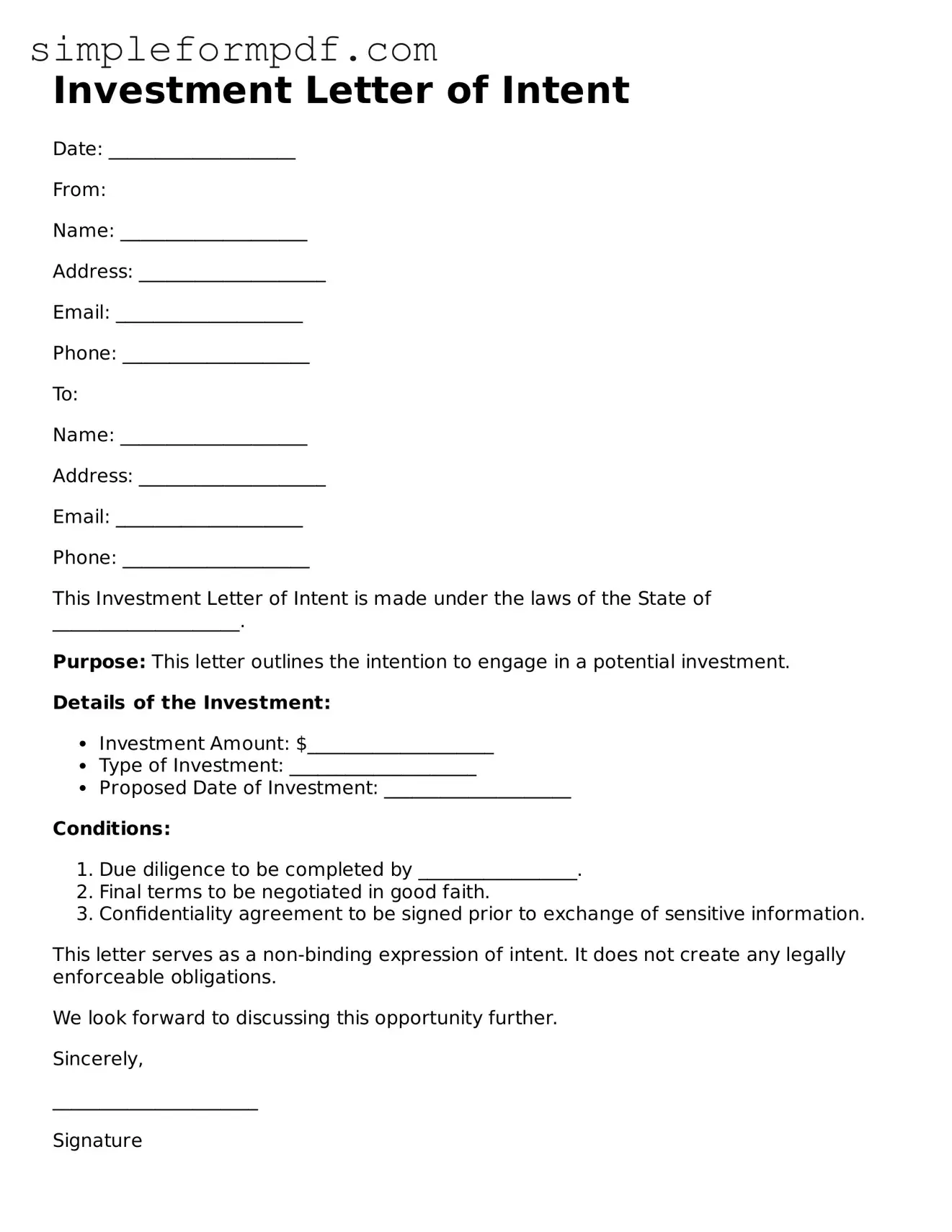Investment Letter of Intent
Date: ____________________
From:
Name: ____________________
Address: ____________________
Email: ____________________
Phone: ____________________
To:
Name: ____________________
Address: ____________________
Email: ____________________
Phone: ____________________
This Investment Letter of Intent is made under the laws of the State of ____________________.
Purpose: This letter outlines the intention to engage in a potential investment.
Details of the Investment:
- Investment Amount: $____________________
- Type of Investment: ____________________
- Proposed Date of Investment: ____________________
Conditions:
- Due diligence to be completed by _________________.
- Final terms to be negotiated in good faith.
- Confidentiality agreement to be signed prior to exchange of sensitive information.
This letter serves as a non-binding expression of intent. It does not create any legally enforceable obligations.
We look forward to discussing this opportunity further.
Sincerely,
______________________
Signature
